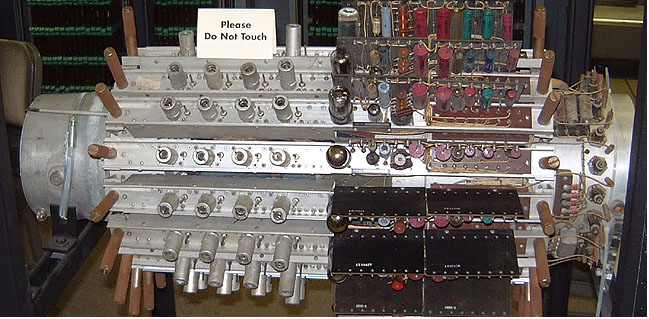Physicist: We’ve gotten a handful of questions since this was published and led to articles like this, this, and, this. In a nutshell, some dudes in Germany (Georg Heinze, Christian Hubrich, and Thomas Halfmann) have found a method to shoot a pulse of light, “stop” that light for about a minute and then get the light going again, using “Electromagnetically Induced Transparency” (EIT). It’s not important to know what EIT involves.
So, what does it mean to “stop light”? Light by it’s very nature always travels at the same speed, 2.99 x 108 meters per second: the aptly named “speed of light”. So, for example, when it travels through water or glass and it “slows down” it’s actually just getting absorbed and re-emitted over and over by atoms in whatever it’s traveling through. When it does travel, it travels at full speed. And if “stopping light” means holding the energy for a while and then re-releasing it later, then what’s the difference between what Heinze, Hubrich, and Halfmann did and what a rock does when it heats up in sunlight and then radiates that heat later (as infrared light)?
The answer to that question, and what makes this experiment important, is that the process preserves the photons’ information. The rock that absorbs sunlight and radiates that energy as heat later is scrambling the sunlight’s information completely, but what H and H and H did preserves the light’s information almost perfectly. It’s a little profound how perfectly it preserves the light’s information.

An image, which is “classical information”, is shown after several different storage times. This shows that not only is the energy of the light pulse being stored, but the information in the light pulse is being stored as well.
Not only is it possible to store information like this image, but quantum information can be stored as well. The difference between regular information and quantum information is a little hard to communicate (the exact definition of “information” is already plenty technical before lumping on quantum information). Quantum information is the backbone behind things like entanglement, “action at a distance”, and quantum computation. That last use is the one that physicists are excited about. “Stopping light” is nothing new, but finding a way to store quantum information is a big deal.
Quantum information is the “delicate” part of a thing’s quantum state. When the outside world interacts with a quantum system, it tends to screw it up. We say “the wave function collapsed” or “the system decohered“. Quantum information is only useful and different from classical information when the system (in this case a bunch of light) is allowed to be in superpositions or is entangled with something else. We can tell that the EIT technique preserves quantum information, because we can do experiments on the entanglement between a photon that’s stored, and another that’s not and we find that the entanglement between the two is preserved. Basically, this kind of storage is so “gentle” that it isn’t even a measurement, and all of the quantum state is preserved (quantum information and all).

The UNIVAC I could store as much as 1000 words with 12 letters each in this tank of mercury. This was built right around when “bits” were first becoming the universal standard for information.
Storing light in the way the three H’s have done, is akin to building an early memory device called a “delay line memory“. For comparison, way back in the day (1950 or so) computers were built that used tanks of liquid mercury to store data. Acoustic pulses travel through the mercury tank much slower than electrical signals travel through wires, so you could store tiny chunks of data by reading the pulses from one end of the tank, then re-sending those pulses at the other. The “light storage” technique would be a similar (although much longer time span) memory system for quantum computers.
So, light isn’t being “stopped” it’s “imprinting” on some of the electrons in the crystal that are in very, very carefully prepared states. This imprint isn’t light (so it doesn’t have to move), it’s just excited electrons. That imprint lasts for as much as a minute; slowly accruing errors and fading. After some amount of time that imprint is turned back into light, and it exits the crystal at exactly the speed you’d expect. What makes the experiment most exciting is that this experiment has proven to be an extremely long term method for storing quantum information, which has traditionally been a major hurdle. Normally a quantum computer (such as they are) has to get all of its work done in a fraction of a second.







Pingback: Guerrilla Monkey – Bookmarks
Pingback: Guerrilla Monkey | Bookmarks